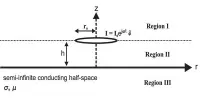The study of rigid matter, or solids, using methods such as quantum mechanics, crystallography, electromagnetism, and metallurgy is known as solid-state physics. It is a subfield of condensed matter physics concerned with the properties and behavior of solid materials. It is the most extensive subfield of condensed matter physics.
It focuses on understanding solids’ physical properties, such as electrical, magnetic, thermal, and optical properties, as well as the underlying principles that govern their behavior. The study of how the large-scale properties of solid materials are derived from their atomic-scale properties is known as solid-state physics. Thus, solid-state physics serves as the theoretical foundation for materials science. It also has direct applications, such as in transistor and semiconductor technology.
With the discovery of quantum mechanics and the realization that the behavior of atoms and electrons within solids differs fundamentally from that of gases and liquids in the early twentieth century, the field of solid-state physics emerged. The study of solid-state physics aims to explain various phenomena observed in solids, such as electrical conductivity, magnetism, superconductivity, and optical properties.
Background
Solid materials are made up of densely packed atoms that interact violently. These interactions are responsible for solids’ mechanical (e.g., hardness and elasticity), thermal, electrical, magnetic, and optical properties. The atoms in a material may be arranged in a regular, geometric pattern (crystalline solids, which include metals and ordinary water ice) or irregularly (an amorphous solid, such as common window glass), depending on the material and the conditions under which it was formed.
As a general theory, the majority of solid-state physics is focused on crystals. This is primarily due to the periodicity of atoms in a crystal — its defining feature — which facilitates mathematical modeling. Similarly, crystalline materials frequently have electrical, magnetic, optical, or mechanical properties that can be used in engineering.
The band theory of solids, which describes the behavior of electrons in a solid material’s crystal lattice, is a central concept in solid-state physics. The electrons in a solid, according to this theory, occupy energy bands, which are ranges of allowed energy levels. The band structure of a material determines its electrical and thermal properties, including conductivity and insulating behavior.
Solid-state physics also investigates phase transitions, which are abrupt changes in a material’s physical properties as a function of temperature, pressure, or other external parameters. The solid-to-liquid melting transition, the ferromagnetic-to-paramagnetic transition, and the superconducting transition are all examples of phase transitions.
Applications
Solid-state physics has a wide range of applications and is critical in the development of electronic devices and materials. It has played a critical role in technological advancement, enabling the development of transistors, integrated circuits, and other electronic components. Solid-state physics also helps to understand and improve materials used in a variety of industries, including semiconductors, optoelectronics, energy storage, and nanotechnology.
















